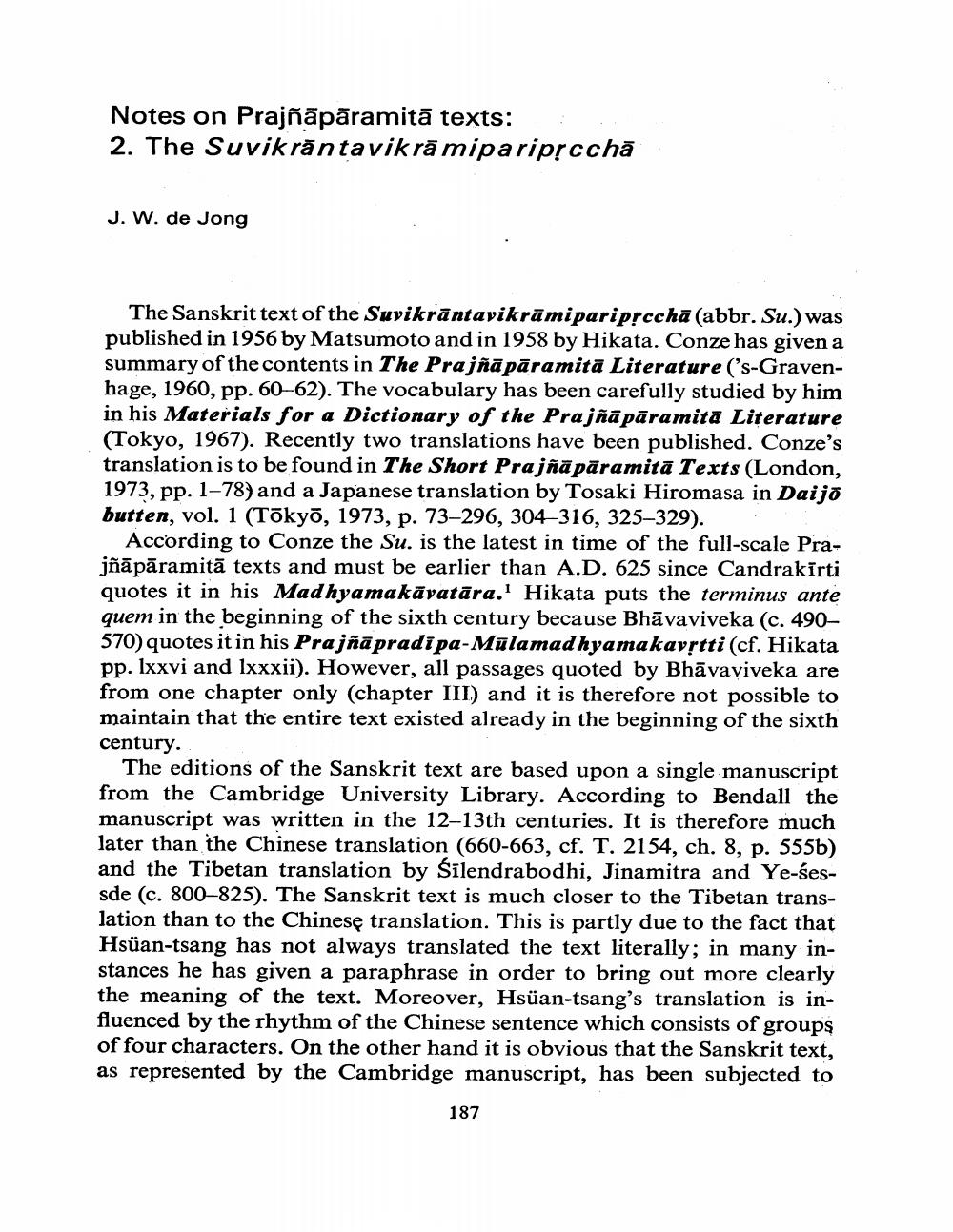Book Title: Notes On Prajnaparamita Texts Author(s): J W De Jong Publisher: J W De Jong View full book textPage 1
________________ Notes on Prajñāpāramitā texts: 2. The Suvik räntavikra miparipṛccha J. W. de Jong The Sanskrit text of the Suvikrantavikramiparipṛccha (abbr. Su.) was published in 1956 by Matsumoto and in 1958 by Hikata. Conze has given a summary of the contents in The Prajñāpāramitā Literature ('s-Gravenhage, 1960, pp. 60-62). The vocabulary has been carefully studied by him in his Materials for a Dictionary of the Prajñāpāramitā Literature (Tokyo, 1967). Recently two translations have been published. Conze's translation is to be found in The Short Prajñāpāramitā Texts (London, 1973, pp. 1-78) and a Japanese translation by Tosaki Hiromasa in Daijō butten, vol. 1 (Tōkyō, 1973, p. 73-296, 304-316, 325-329). According to Conze the Su. is the latest in time of the full-scale Prajñāpāramitā texts and must be earlier than A.D. 625 since Candrakirti quotes it in his Madhyamakāvatāra.1 Hikata puts the terminus ante quem in the beginning of the sixth century because Bhāvaviveka (c. 490570) quotes it in his Prajñāpradipa-Mulamadhyamakavṛtti (cf. Hikata pp. lxxvi and lxxxii). However, all passages quoted by Bhāvaviveka are from one chapter only (chapter III) and it is therefore not possible to maintain that the entire text existed already in the beginning of the sixth century. The editions of the Sanskrit text are based upon a single manuscript from the Cambridge University Library. According to Bendall the manuscript was written in the 12-13th centuries. It is therefore much later than the Chinese translation (660-663, cf. T. 2154, ch. 8, p. 555b) and the Tibetan translation by Silendrabodhi, Jinamitra and Ye-sessde (c. 800-825). The Sanskrit text is much closer to the Tibetan translation than to the Chinese translation. This is partly due to the fact that Hsüan-tsang has not always translated the text literally; in many instances he has given a paraphrase in order to bring out more clearly the meaning of the text. Moreover, Hsüan-tsang's translation is influenced by the rhythm of the Chinese sentence which consists of groups of four characters. On the other hand it is obvious that the Sanskrit text, as represented by the Cambridge manuscript, has been subjected to 187Page Navigation
1 2 3 4 5 6 7 8 9 10 11 12 13
